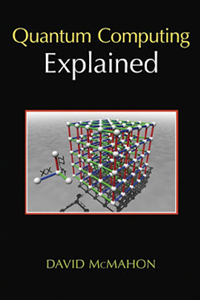
| Book Name | Quantum Computing Explained |
| Author | David McMohan |
| Publish Year | 2008 |
| Publisher | John Wiley and Sons |
| Language | English |
| Genre | Computing |
| ISBN | 978-0-470-09699-4 |
| Download | Link |
Quantum Computing Explained Review:
At the present time quantum computers are mostly theoretical constructs. However, it has been proved that in at least some cases quantum computation is much faster in principle than any done by classical computer. The most famous algorithm developed is Shor’s factoring algorithm, which shows that a quantum computer, if one could be constructed, could quickly crack the codes currently used to secure the world’s data. Quantum information processing systems can also do remarkable things not possible otherwise, such as teleporting the state of a particle from one place to another and providing unbreakable cryptography systems.A classical computer has a memory made up of bits, where each bit is represented by either a one or a zero. A quantum computer maintains a sequence of qubits. A single qubit can represent a one, a zero, or any quantum superposition of those two qubit states; a pair of qubits can be in any quantum superposition of 4 states, and three qubits in any superposition of 8 states. In general, a quantum computer with qubits can be in an arbitrary superposition of up to 2 different states simultaneously (this compares to a normal computer that can only be in one of these states at any one time). A quantum computer operates by setting the qubits in a controlled initial state that represents the problem at hand and by manipulating those qubits with a fixed sequence of quantum logic gates. The sequence of gates to be applied is called a quantum algorithm. The calculation ends with a measurement, collapsing the system of qubits into one of the pure states, where each qubit is zero or one, decomposing into a classical state. The outcome can therefore be at most classical bits of information. Quantum algorithms are often non-deterministic, in that they provide the correct solution only with a certain known probability.
An example of an implementation of qubits of a quantum computer could start with the use of particles with two spin states: "down" and "up" (typically written and , or and ). But in fact any system possessing an observable quantity A, which is conserved under time evolution such that A has at least two discrete and sufficiently spaced consecutive eigenvalues, is a suitable candidate for implementing a qubit. This is true because any such system can be mapped onto an effective spin-1/2 system.









